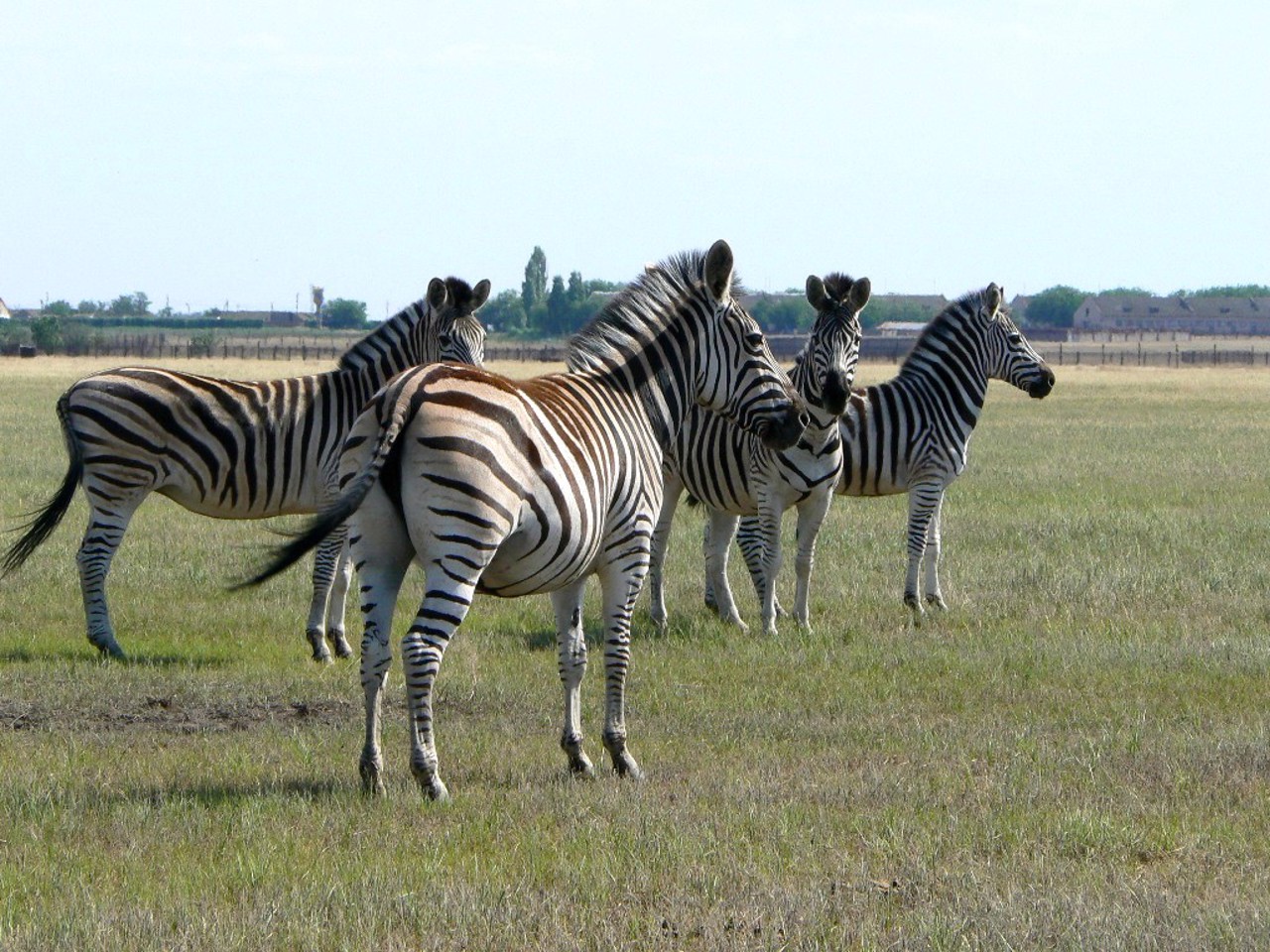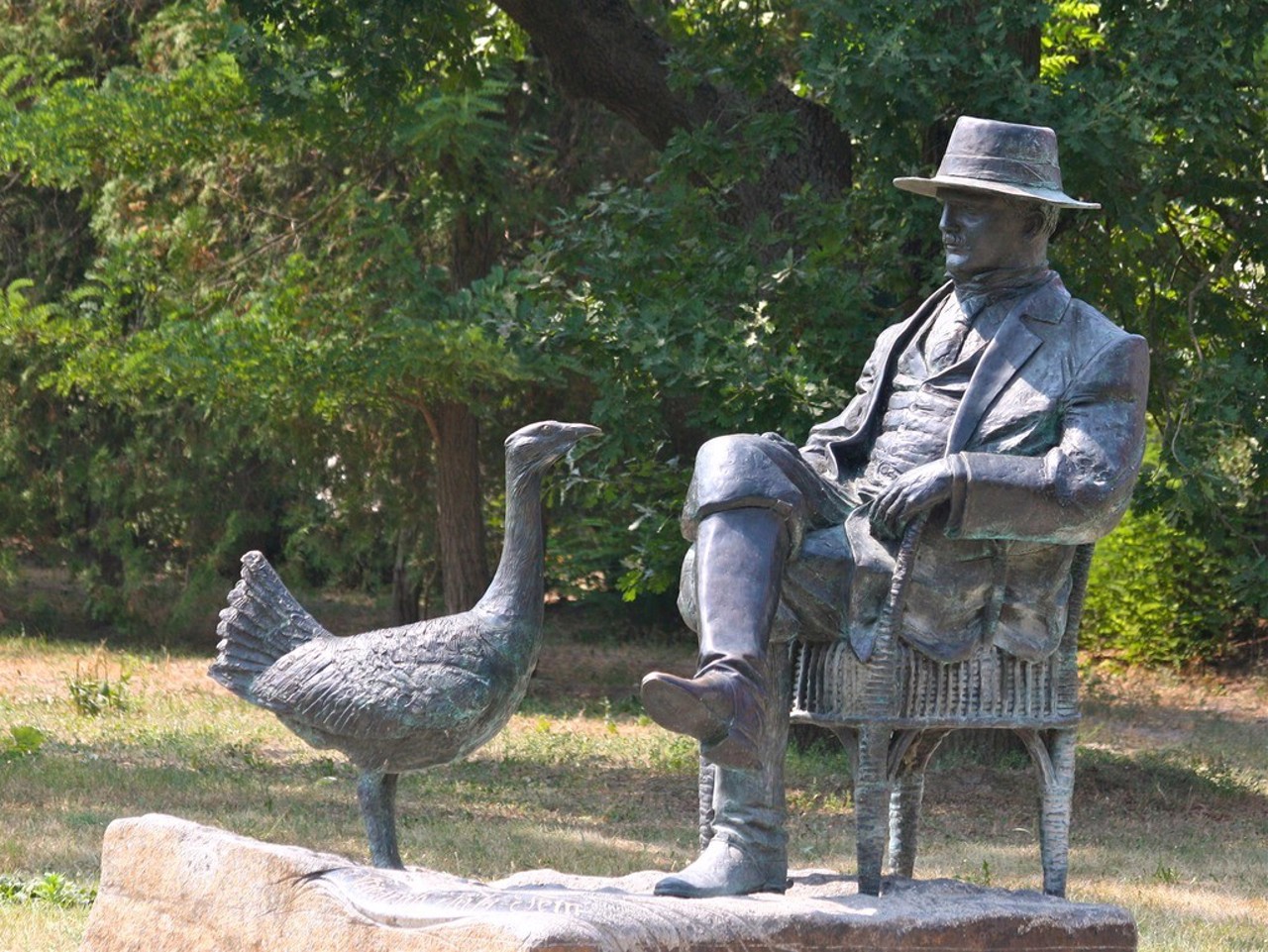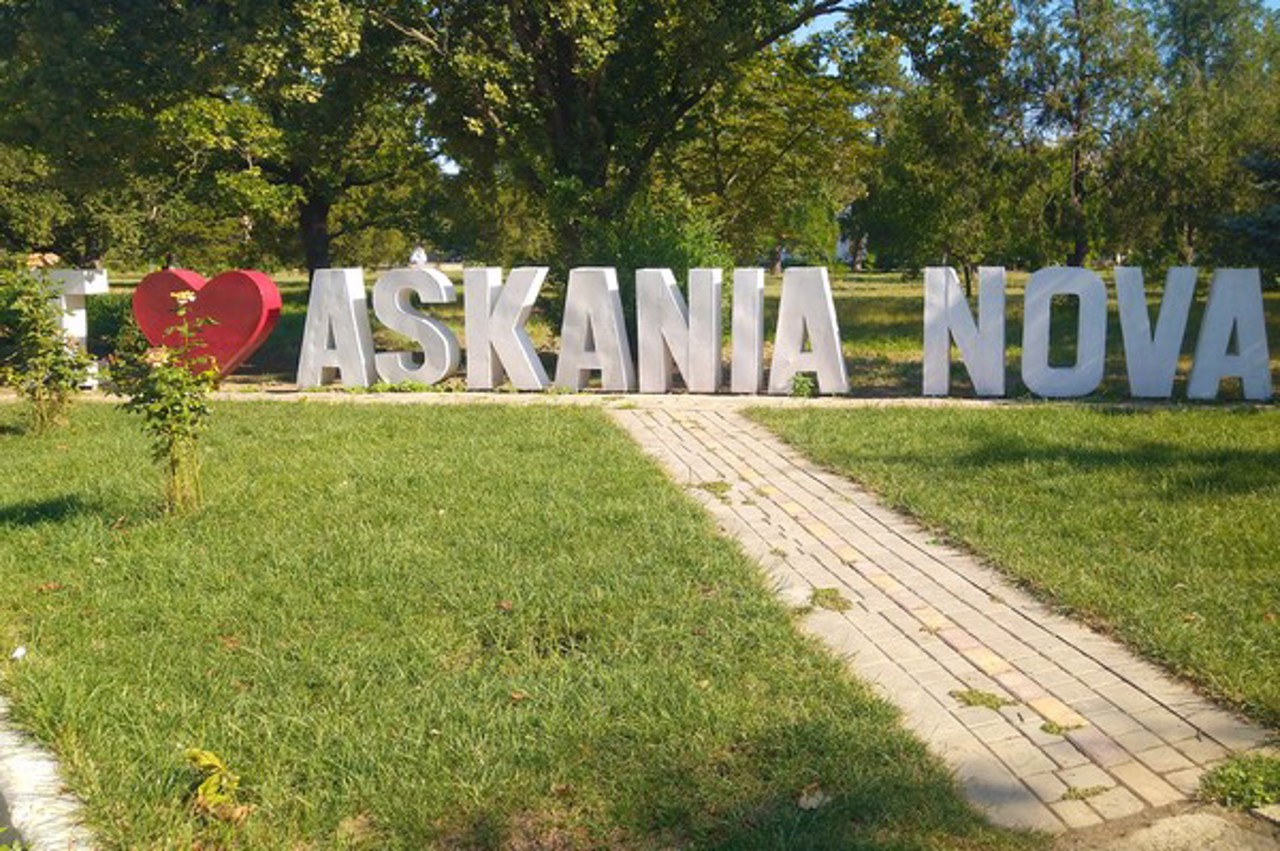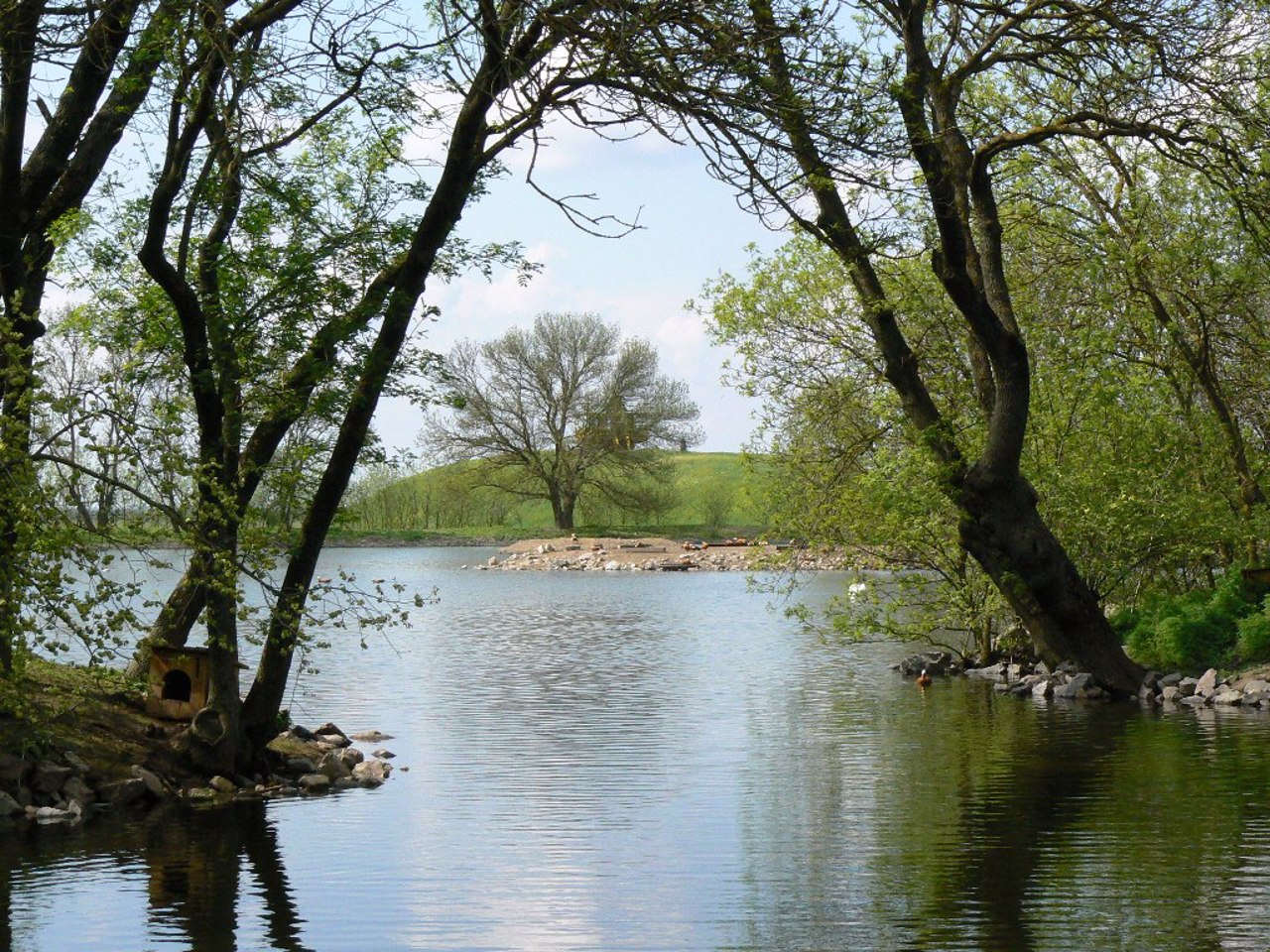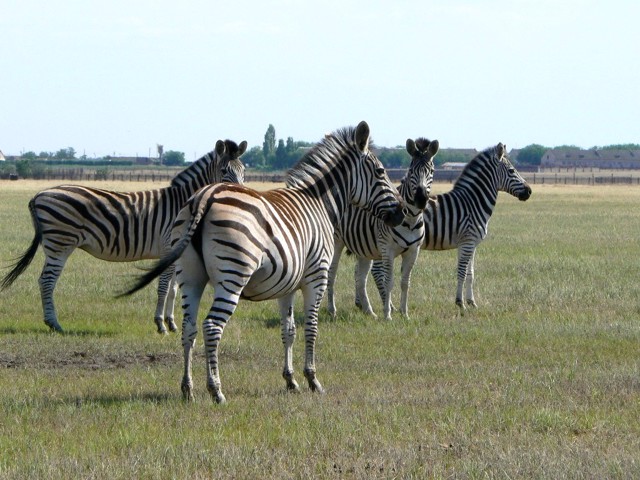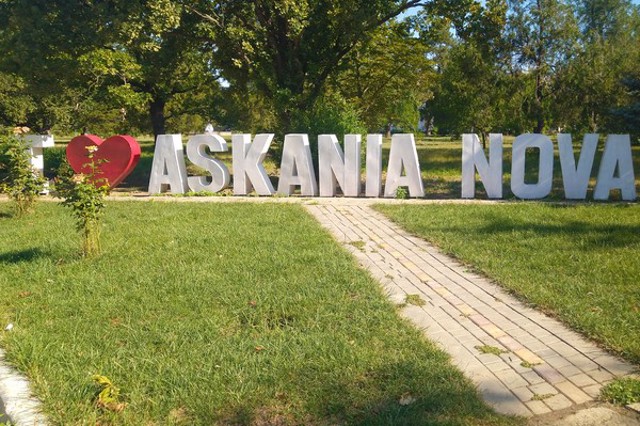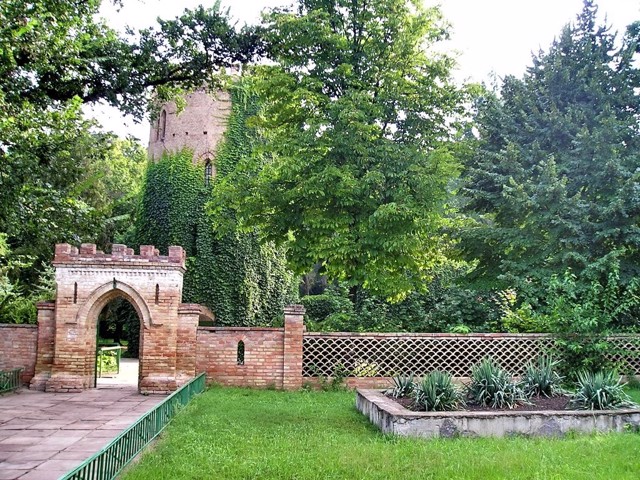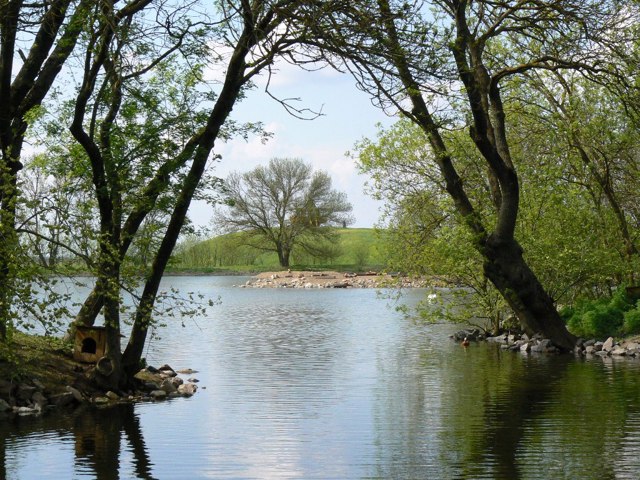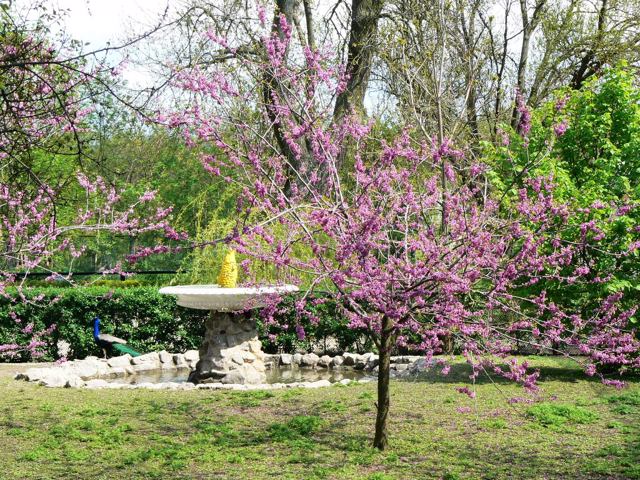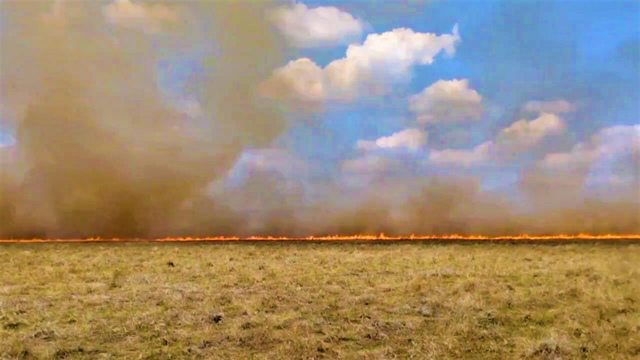Functional temporarily unavailable
Askaniia-Nova
Travel guide online Askaniia-Nova
General information about Askaniia-Nova
The settlement Askania-Nova, home to the biosphere reserve of the same name, is located in the steppe between Kakhovka and Henichesk.
The village was founded in 1822 as Chapli by the Duke of Anhalt-Kéten, Count of Askansky. The duke named his estate Askania-Nova in memory of the estate of Askania, which was lost in Prussia.
Later, these lands for breeding sheep and horses were purchased by a large landowner, Eduard Falz-Fein. In 1874, his son Friedrich Falz-Fein set up an aviary for birds here, which can be considered the moment of the founding of the "Ascania-Nova" nature reserve. It was the first private nat ...
The settlement Askania-Nova, home to the biosphere reserve of the same name, is located in the steppe between Kakhovka and Henichesk.
The village was founded in 1822 as Chapli by the Duke of Anhalt-Kéten, Count of Askansky. The duke named his estate Askania-Nova in memory of the estate of Askania, which was lost in Prussia.
Later, these lands for breeding sheep and horses were purchased by a large landowner, Eduard Falz-Fein. In 1874, his son Friedrich Falz-Fein set up an aviary for birds here, which can be considered the moment of the founding of the "Ascania-Nova" nature reserve. It was the first private nature reserve in the country and the only massif of unspoiled typchakovo-kovilov steppe (33,000 hectares) preserved in Europe. A zoo was created and a unique arboretum with artificial lakes was laid (1885), for which Falz-Fein received a gold medal at an exhibition in Paris for its irrigation system. In semi-free conditions, 250 species of mammals and birds from all continents are kept (including Przewalski's horse saved from extinction and the world's largest kanna antelope), 2500 species of plants grow.
Later, Falz-Fein installed a water supply, telegraph, telephone, electric lighting, built a post office, a hospital and assembled a large library in Askania. After the revolution, he was forced to flee abroad (his descendants live in Liechtenstein).
On the basis of the reserve, a scientific research institute was created, which studies the nature of the Kherson Region. The museum is open, photo safaris are organized through the arboretum with a trip to Velikiy Chapelsky pod in horse-drawn carriages. The Falz-Fein manor is being restored.
Селище Асканія-Нова, де знаходиться однойменний біосферний заповідник, розташоване в степу між Каховкою та Генічеськом.
Селище засноване в 1822 році як Чаплі герцогом Ангальт-Кетенським, графом Асканським. Свою садибу герцог назвав Асканія-Нова в пам'ять про втрачений в Пруссії маєток Асканія.
Пізніше ці землі для розведення овець і коней придбав великий землевласник Едуард Фальц-Фейн. В 1874 році його син Фрідріх Фальц-Фейн влаштував тут вольєр для птахів, що можна вважати моментом заснування заповідника "Асканія-Нова". Це був перший в країні приватний заповідник і єдиний збережений в Європі масив цілинного типчаково ...
Селище Асканія-Нова, де знаходиться однойменний біосферний заповідник, розташоване в степу між Каховкою та Генічеськом.
Селище засноване в 1822 році як Чаплі герцогом Ангальт-Кетенським, графом Асканським. Свою садибу герцог назвав Асканія-Нова в пам'ять про втрачений в Пруссії маєток Асканія.
Пізніше ці землі для розведення овець і коней придбав великий землевласник Едуард Фальц-Фейн. В 1874 році його син Фрідріх Фальц-Фейн влаштував тут вольєр для птахів, що можна вважати моментом заснування заповідника "Асканія-Нова". Це був перший в країні приватний заповідник і єдиний збережений в Європі масив цілинного типчаково-ковилового степу (33 тисячі гектарів). Був створений зоопарк і закладений унікальний дендропарк з штучними озерами (1885 рік), за аричну систему зрошення якого Фальц-Фейн отримав золоту медаль на виставці в Парижі. У напіввільних умовах утримуються 250 видів ссавців і птахів з усіх континентів (в тому числі врятований від зникнення кінь Пржевальського та найбільша в світі антилопа канна), росте 2500 видів рослин.
Пізніше Фальц-Фейн провів в Асканії водопровід, телеграф, телефон, електричне освітлення, побудував пошту, лікарню та зібрав велику бібліотеку. Після революції був змушений тікати за кордон (його нащадки живуть в Ліхтенштейні).
На базі заповідника створено науково-дослідний інститут, який займається вивченням природи Херсонщини. Працює музей, організовують фото-сафарі дендропарком з виїздом у Великий Чапельський под в кінних екіпажах. Реставрується садиба Фальц-Фейна.
Сплануй своє перебування у Askaniia-Nova
What to see and where to go in Askaniia-Nova
Tourist attractions and museums of Askaniia-Nova
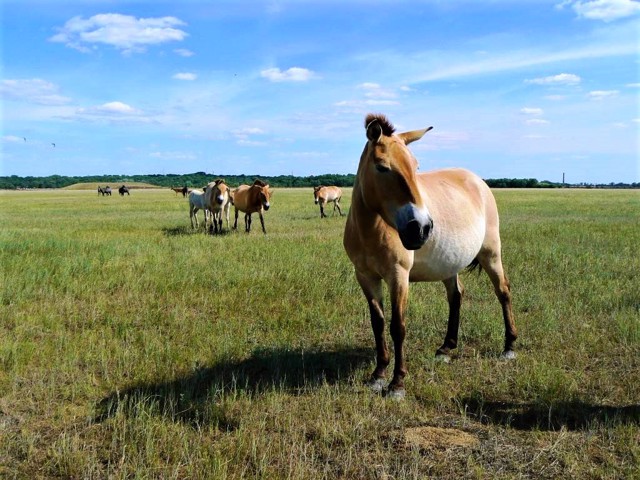
Askania-Nova Biosphere Reserve
Palace / manor , Park / garden , Reserve , Zoo
Askania-Nova Biosphere Reserve is the oldest reserve complex in Ukraine. Founded at the end of the 19th century by Fridrikh Falts-Feyn as a private "Chapli" reserve on 500 acres of land.
Here, a large area of pristine Kovylo-Typchak steppe has been preserved in its original form - Velikiy Chapelsky pod, where herds of wild animals are freely kept. In conditions close to natural, you can see 250 species of mammals and birds from all continents. In particular, Przhevalsky's horse was saved from disappearance here. The pride of the reserve is the African kanna antelope, which was tamed. The steppe is especially beautiful during the flowering of the nightshade at the end of spring.
The complex includes a zoo (1886) with sections of hummingbirds, ostriches and ungulates, as well as a dendrological park with artificial lakes (1885), for the aric irrigation system of which Falz-Fein received a gold medal at an exhibition in Paris. 14 Polovtsian stone statues (XI-XII centuries) are collected on the territory.
The manor of Falts-Feyn has been restored.
Photo-safari excursions to the Veliky Chapelsky paddocks on minibuses or horse-drawn carriages are organized upon prior reservation (from May to September, only in dry weather).
Askaniia-Nova in news and blogs
Reviews Askaniia-Nova
Geographical information about Askaniia-Nova
| {{itemKey}} | {{itemValue}} |
|---|---|
| Region |
Kherson |
